|  Dwight Peck's personal website Dwight Peck's personal website
Kristin's visit: Southwest of France 2009
Maddening months at work, trying to migrate a very large Web site to a different technology, and no end in sight. It's time to take a break and, as luck would have it, Kristin's coming for a visit. We'll go to France for a while.
Brantôme and nearby attractions
You
may not find this terribly rewarding unless you're included here, so this is a
good time for casual and random browsers to turn back before they get too caught
up in the sweep and majesty of the proceedings and can't let go.
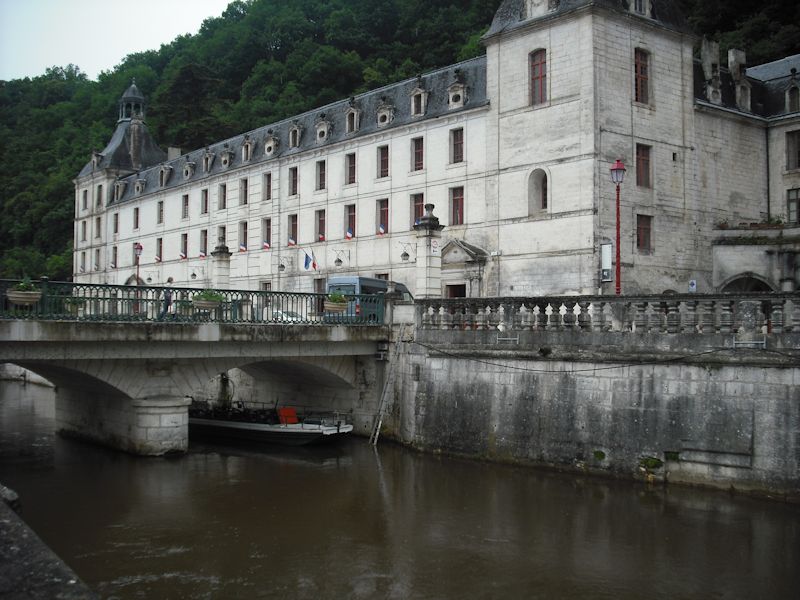
Here's Brantôme, built on an island by the looks of it, just a ways up the Dronne from Bourdeilles. The abbey (here put to good town-hall use by the civic bureaucrats) was founded by Charlemagne in 769 but trashed more than once by the Normans in the 11th century, and rebuilt repeatedly, most awkwardly in the 19th century. The cliffs behind the abbey are hollowed out and filled with automobile dealerships, homeless shelters, car parks, whatever. It's a sobering sight.

The abbey has been much "restored", but that's still the oldest bell tower in France, with a Merovingian base and 11th century arches.
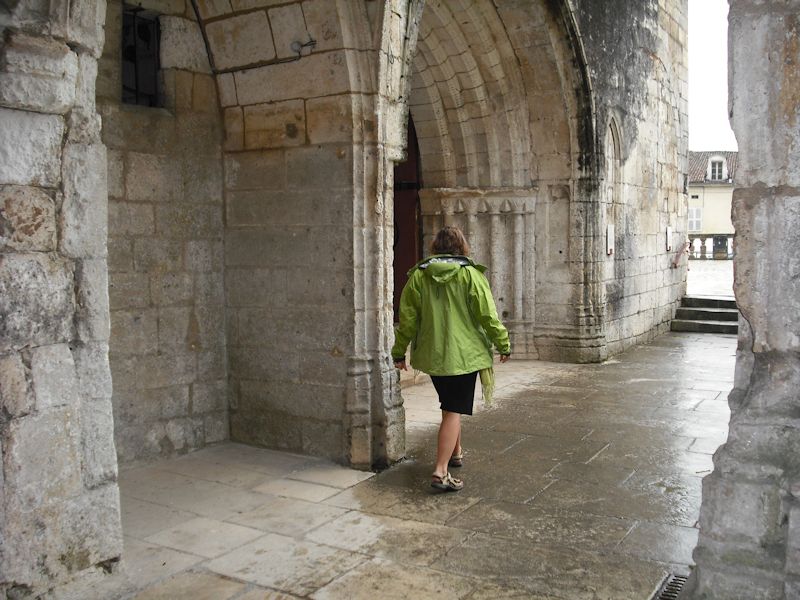
Kristin's poking round in the abbey, looking for more strange stories. Here's one -- the city's patron saint, St Sicarius (or Sicaire), is described on most Google-found sites as one of the martyred kids of Herod's Massacre of the Innocents (of biblical fame). Wrong. Saint Sicarius was not a massacree, he was in fact a massacre-er, one of Herod's goons, but he later repented and became a Christian. So that's all right then. Like Chuck Colson.

The patron saint of Brantôme. Luckily, worthy Charlemagne, in 769, just happened to be carrying St Sicaire's bones around with him as he was passing through the region, and he left Sicaire here to lend a certain sanctity to his new abbey. We're taught these days to feel right at home with this healthy veneration of self-redeemed hooligans and war criminals.

So who's the hooligan, then?
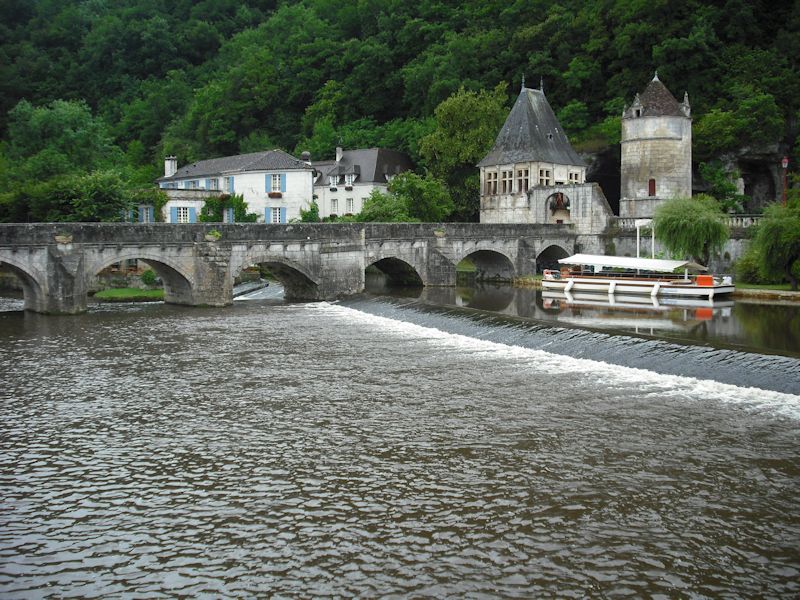
The mighty Dronne, where the canoes and kayaks embark for Bourdeilles.
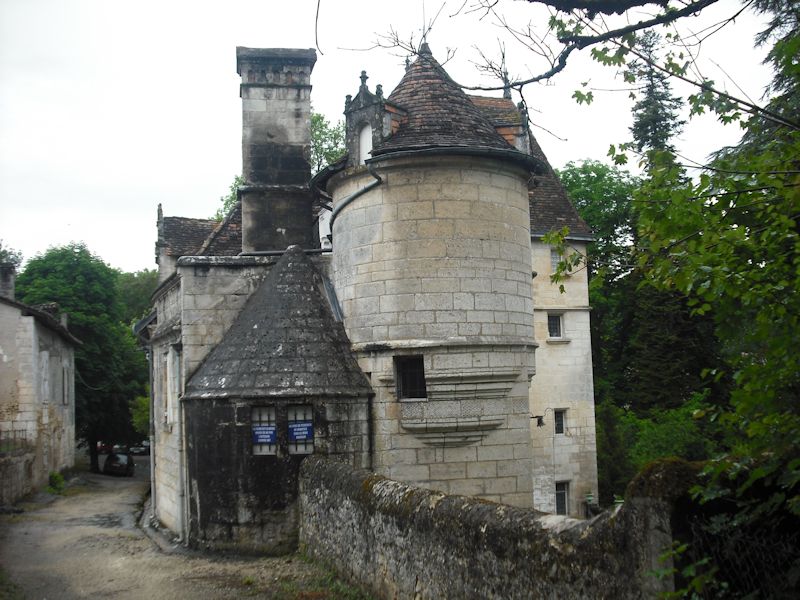
Brantôme street scene

Brantôme street scene bis

Brantôme street scene ter

Brantôme street scene quator

And now it's time to move on.

The Château de Puyguilhem, just northeast of Brantôme. Go ahead and pronounce that name. Go ahead, try it out.

Built in 1524 by local worthies, the Marthonie family, this place is celebrated for the carvings on its chimneys and dormers, which are really cool, at least from ground level.

But the top floor of that leftward story is more than "richly carved", it's really strange. Alas, further study was impossible without leaving the tourist areas inside, probably requiring a letter from your congressman.

The loo in the living rock - some conveniences of the modern era are always welcome.

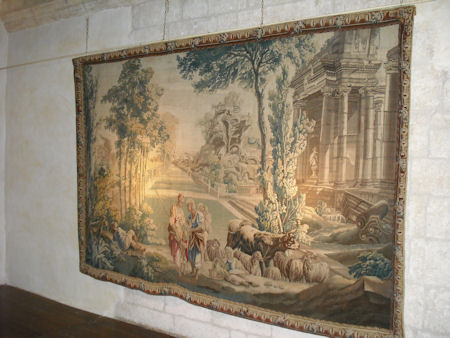
|

|
How's this for a theme-park attraction (arguably even better that the water faucet that poured uphill at FreedomLand, 1960-1964 in The Bronx). The perspective in this very old tapestry varies depending upon where in the room you're standing. It's very disconcerting. Like those portraits where the eyes follow you around the room, and possibly for years afterward.

Out on the castle grounds, we're in the circular pigeon house. WHO would look straight up in a pigeon house?

-- Your turn.
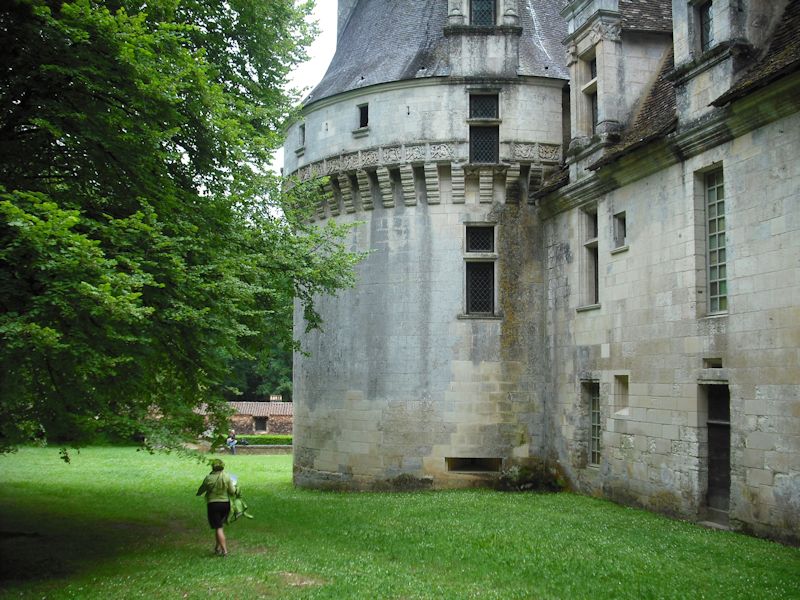
More castles still to be seen, time to move it along.

A last look at the very weird arrangements on the top of the tower. Now we're moving on.

We're wandering lonely as a medieval-castle-hopping cloud, and (en route) this is St Jean-de-Côle (the Côle is the local river, which carries on to Brantôme, I believe). That's the castle, the Château de la Marthonie -- 12th century but reduced to rubble by the English and reconstructed in the 15th century, home to Mondot de la Marthonie, the very same president of the parlement of Bordeaux who built Puyguilhem (above). It's owned now by a foreigner, we were told, who will let you see it if he's in residence but he's not. Probably he's got a condo on a golf course near Atlanta and this is high season on the tees.

The bridge, with its flotsam and jetsam deflectors facing upstream, is picturesque but doesn't seem to lead anywhere anymore.

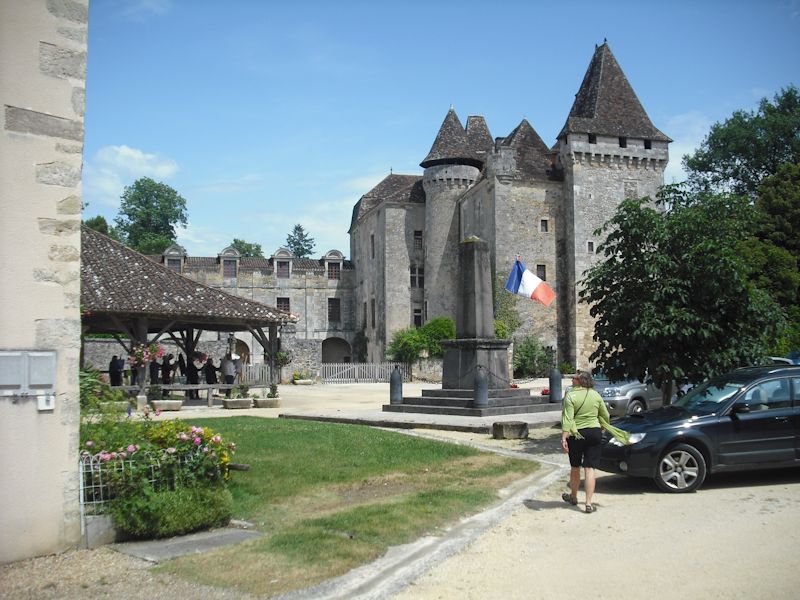
The château, and on the left, a class of aspiring painters interpreting the village square next to the village church, also very worthy of a photo (it's got a very weird trefoil shape) but we don't want this page to get too long.
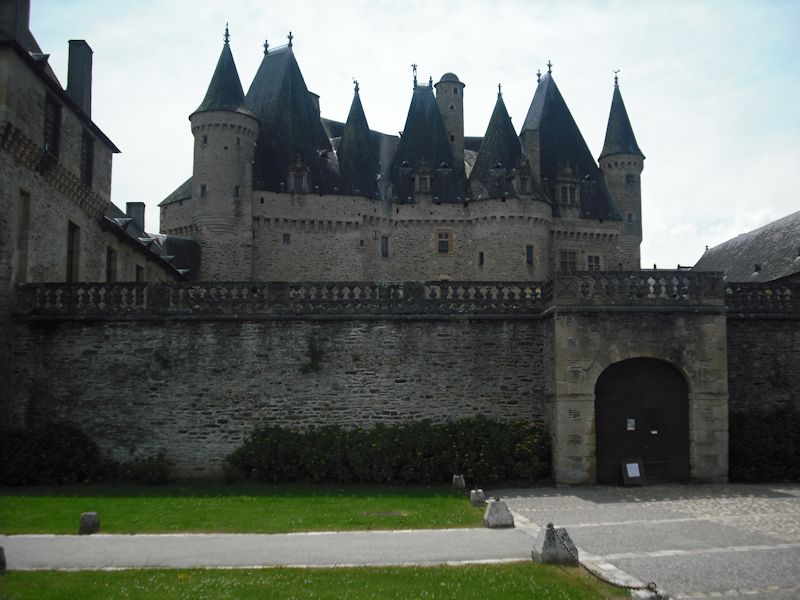
Because this is our real goal, the Château de Jumilhac. Our guide, a charming fellow with a suitable pride in the renovation works and the privacy of the incumbent family, was showing another guy around the castle just now (we're in the off season), so we need to sit out in the car park for a while.
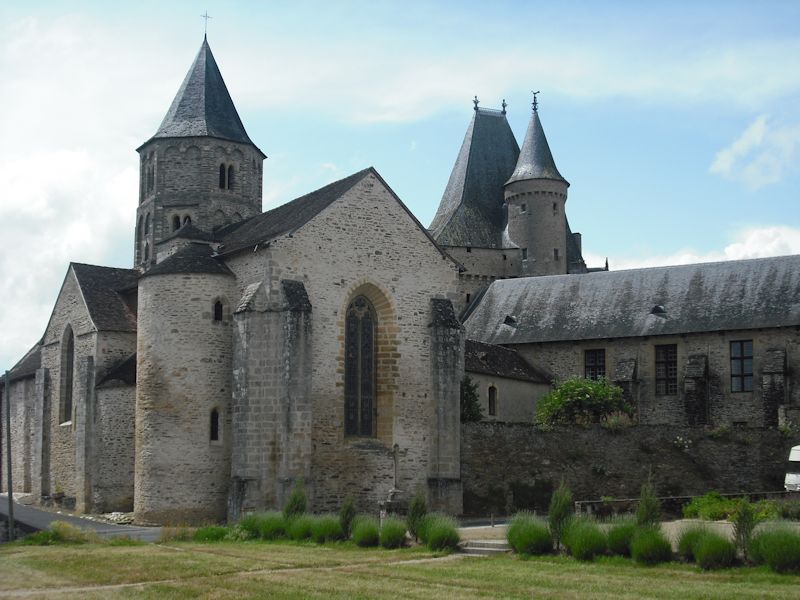
The castle chapel, just outside the walls. We're waiting to get into the front gate.
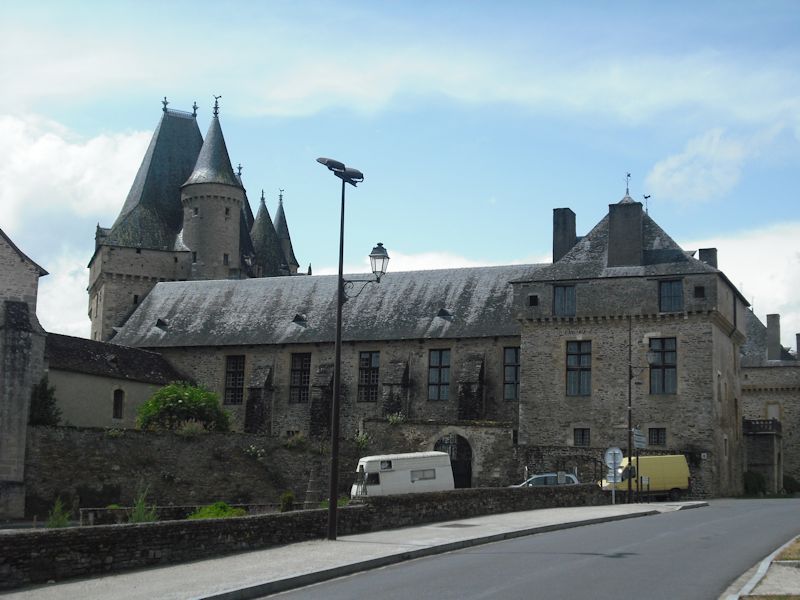
Another view. We're still outside the gates.

And the whole thing from just uptown, at the top end of the parade ground or market square or whatever this is. We were entertained by quite a story about the alchemical significance of the symbolisms on those spire-top embellishments -- the message seemed to be that if you were to figure out those decorations correctly you could eventually turn base metals into gold. If you had the philosopher's stone. Which you probably don't have.

The symbology lecture, delivered gazing upward from just inside the front gate, was interesting but, without some study, probably flakey. No photos inside, unfortunately, so that's it for today. You can rent the Great Hall for weddings, funerals, etc.
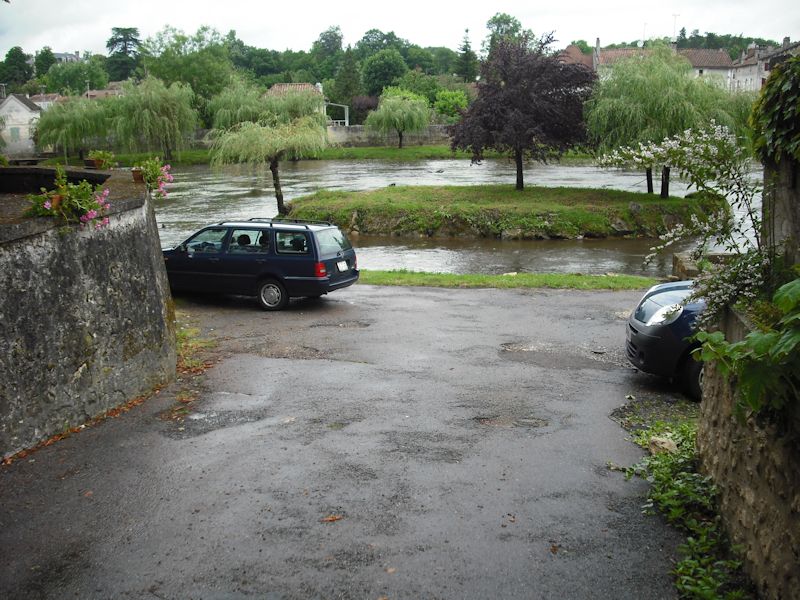
Another French downpour, but we've made it home to the Griffons. Dieter has to stay outside.
 Feedback
and suggestions are welcome if positive, resented if negative, Feedback
and suggestions are welcome if positive, resented if negative,  .
All rights reserved, all wrongs avenged. Posted 1 August 2009, 17 August 2013. .
All rights reserved, all wrongs avenged. Posted 1 August 2009, 17 August 2013.
|
 Dwight Peck's personal website
Dwight Peck's personal website

































